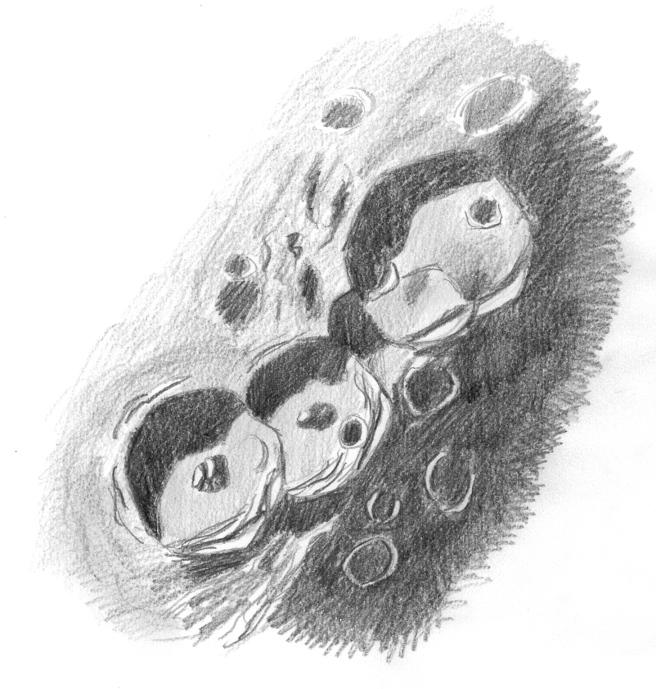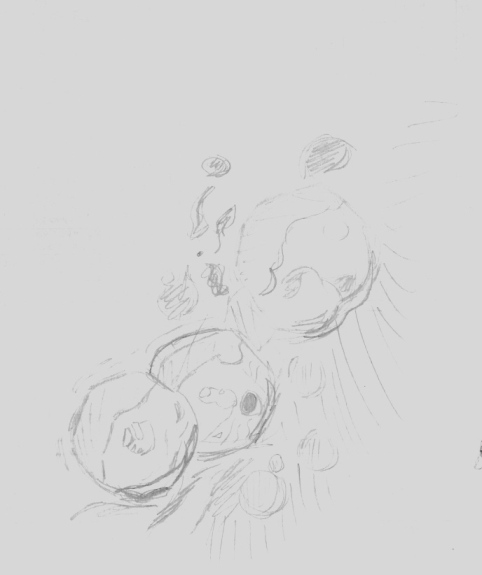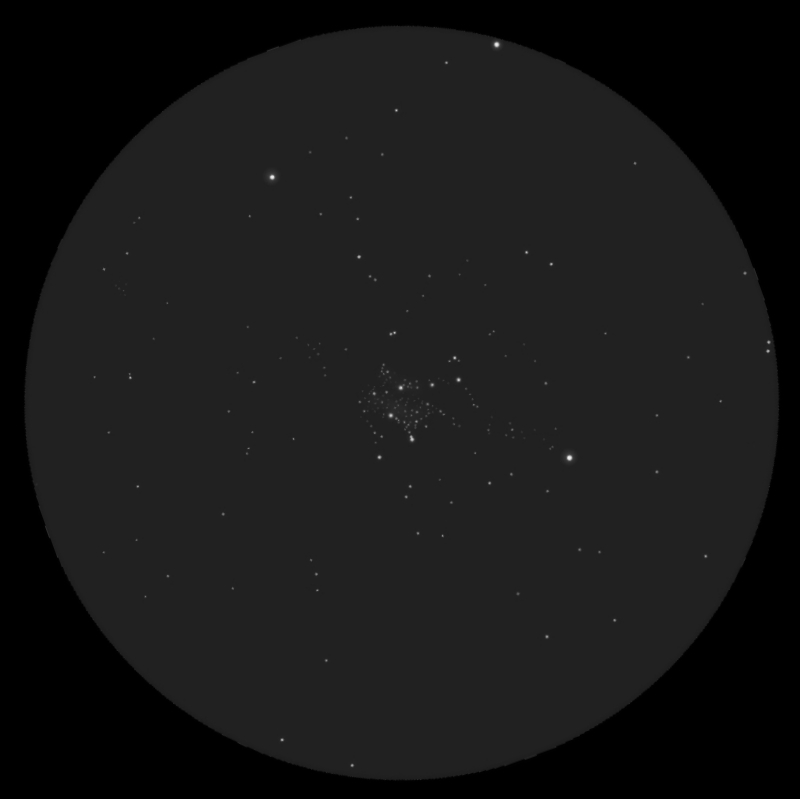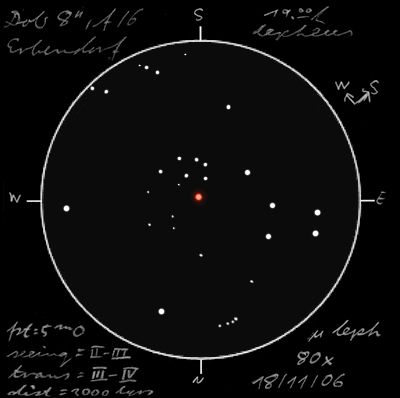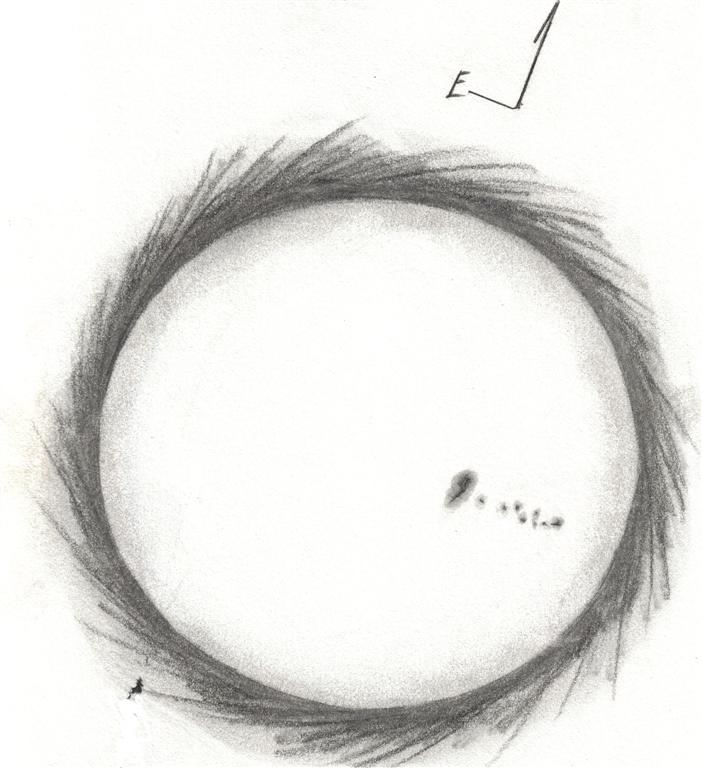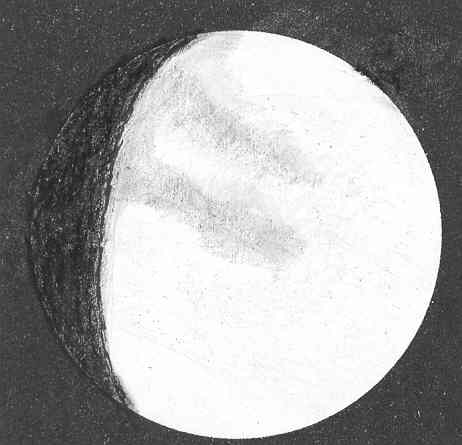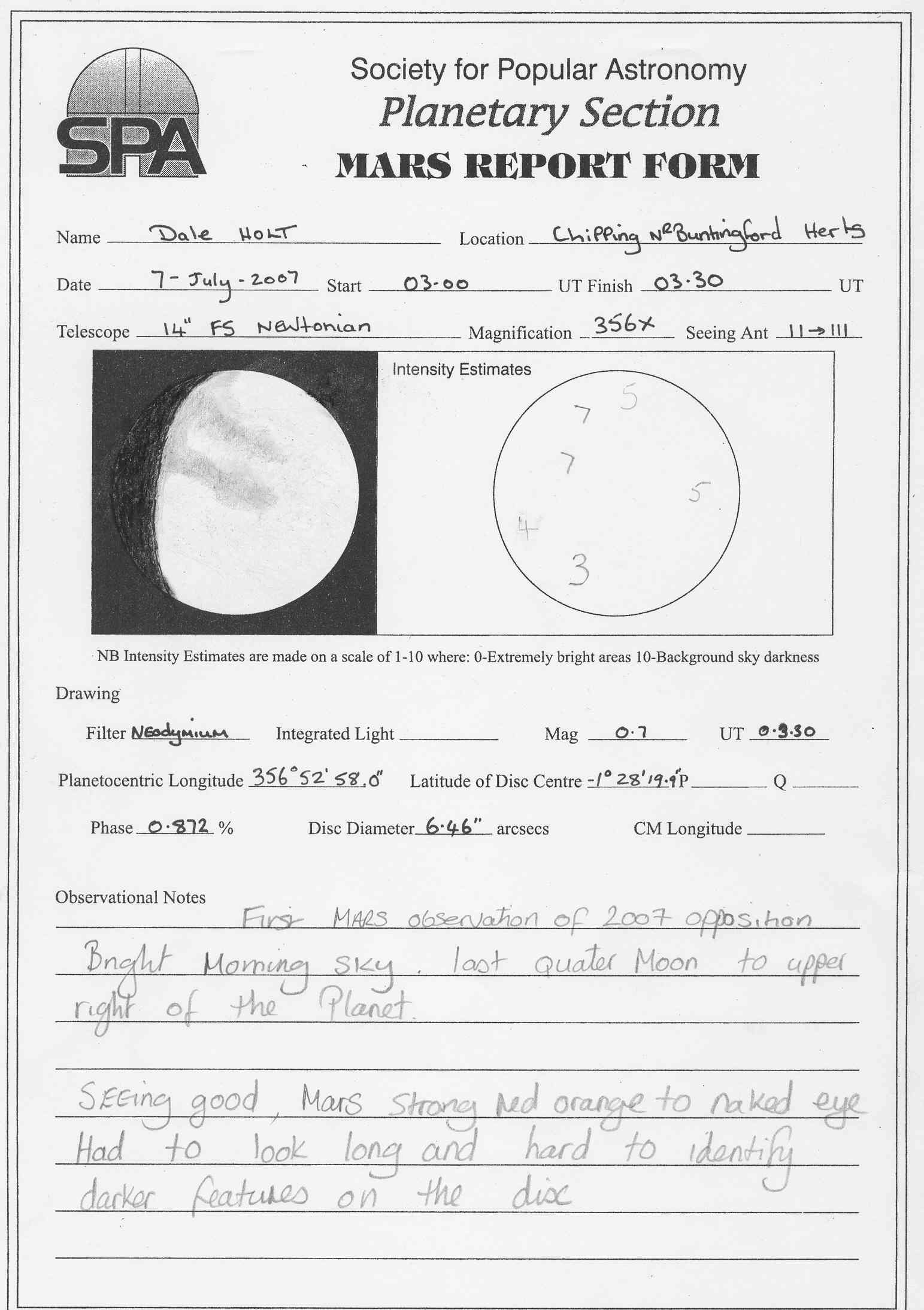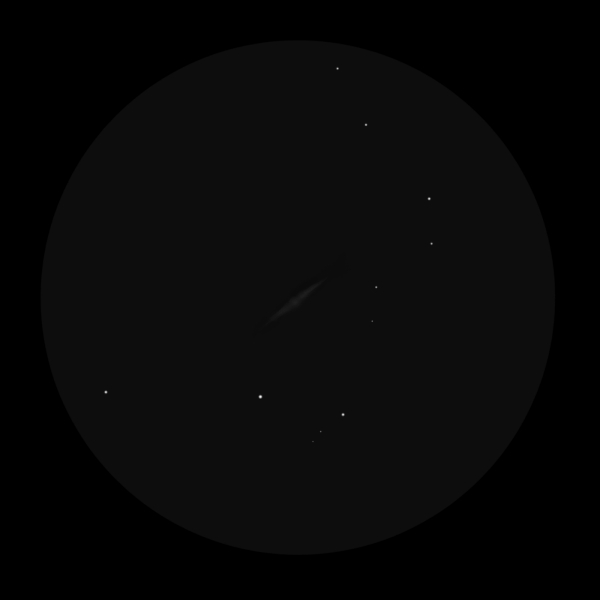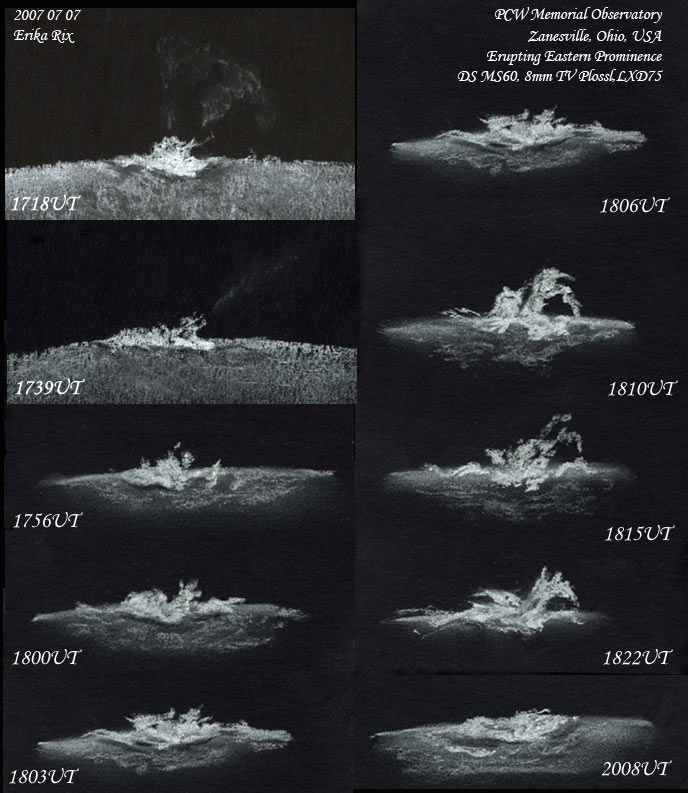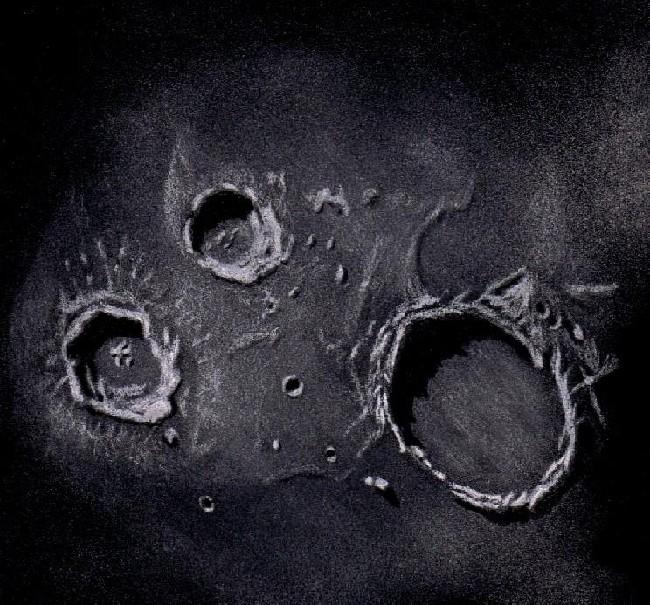
Archimedes et. al.
Finally, I was blessed with a clear sky. It has been 26 days since the beginning of the year and this is my fourth clear or mostly clear night. With the moon well into lunation 1040, it was bright and high in the sky at nightfall. After observing the lunar surface for about forty-five minutes, I selected a favorite region in eastern Mare Imbrium for sketching.
As an eighth grader with a new 4.25 inch f/10 Newtonian telescope, Archimedes was the first crater I remember identifying with this scope. I selected my 10 inch f/ 5.7 Dobsonian and 6mm eyepiece to make my sketch of this region. In the sketch below the three craters in counterclockwise direction from smallest to largest are: Autolycus, Aristillus and Archimedes. About half way between Autolycus and Archimedes is the impact site of the first spacecraft to reach the moon September 14, 1959. It was Luna 2 and after crossing through the Van Allen belt it detected and confirmed the solar ions known as the solar wind particles just prior to its lunar rendezvous.
The two smaller craters are from the Copernican period and the larger crater Archimedes is an ancient crater that dates back beyond 3 billion years ago. The terraced walls of Archimedes stand 2000 meters above the flat lava flooded floor of this crater. I was unable to detect at this observation any of the craterlets on the floor. This crater is 85 km. across. Autolycus is less than half the diameter of Archimedes has a higher rim (3000 meters) and an irregular floor. Aristillus which is intermediate in size (56 km diameter) has the tallest rim at 3500 meters and 3 mountains on its floor up to 900 meters tall.
For this sketch I used: black Strathmore 400 Artagain paper, white and black Conte’
pastel pencils and a soft piece of leather for blending. Image was slightly darkened using Imageenhance software.
Date 1-27-2007 1:10-2:40 UT
Temperature: 3.8° C (39° F)
Windy with strong gusting
Seeing average Antoniadi: III
Colongitude: 10.5 °
Lunation: 7.9 days
Illumination: 62.3 %
Frank McCabe



